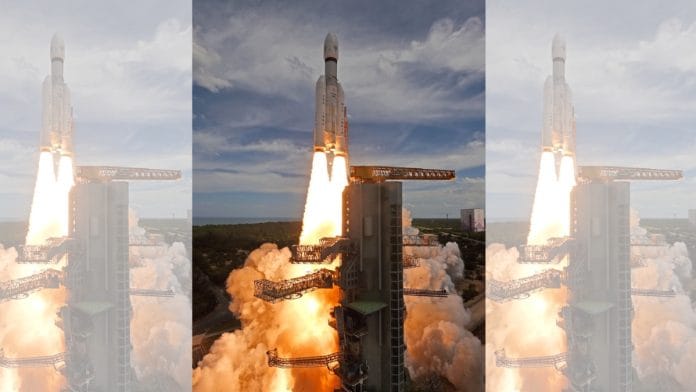New Delhi: The Chandrayaan-3 mission is on schedule and systems are undergoing regular checks, the Indian Space Research Organisation ((ISRO) posted on X Tuesday, ahead of touchdown around 6.04 pm on 23 August.
“Smooth sailing is continuing. The Mission Operations Complex (MOX) is buzzed with energy & excitement!,” ISRO said, adding that the landing operations from MOX would be live telecast from 5.20 pm on Wednesday.
A successful landing on the moon’s south pole Wednesday will expand knowledge of lunar water ice, which is potentially one of the moon’s most valuable resources. It will also expand India’s space ambitions as the country will be only the fourth to land an unmanned spacecraft on a celestial body after the US, China and erstwhile USSR.
Chandrayaan-3 Mission:
The mission is on schedule.
Systems are undergoing regular checks.
Smooth sailing is continuing.
The Mission Operations Complex (MOX) is buzzed with energy & excitement!
The live telecast of the landing operations at MOX/ISTRAC begins at 17:20 Hrs. IST… pic.twitter.com/Ucfg9HAvrY
— ISRO (@isro) August 22, 2023
Incidentally, a similar mission by Russia – the Luna-25 spacecraft – spun out of control and crashed into the moon on Saturday after a problem preparing for pre-landing orbit.
Knowledge about ancient water ice – if it exists in sufficient quantities – could be a source of drinking water for moon exploration and could also help cool equipment, scientists have said. It could also be broken down to produce hydrogen for fuel and oxygen to breathe, supporting missions to Mars or lunar mining.
If India succeeds Wednesday, it will be the first country to land on the lunar south pole – a tricky exercise as the region is full of craters and deep trenches.
The final 20 minutes will be the most crucial, as detailed in this report.
Around 5.45 pm Wednesday, the lander, Vikram, will begin its descent from an altitude of 25 kilometres.
The lander will descend very fast at a speed of 1.68 km per second, which is almost 10 times the velocity of a plane.
It will then slow down but will still be horizontal to the surface of the moon — this is the rough-braking phase which will last for about 11 minutes.
Through ISRO commands, Vikram will be made vertical to the moon surface for the final descent – also known as the fine-braking phase.
This is where the Chandrayaan-2 mission had gone wrong, when Vikram had gone out of control and crashed on the surface four years ago.
At 800 metres, Vikram will hover above the lunar surface, looking for a place to land. It will then go down further to stop at 150 metres and take images to detect hazards.
The ultimate touchdown will be on sturdier legs this time, ISRO scientists have said, which are designed to take a maximum impact of 3m/second or about 10.8 km per hour.
Once the sensors on the legs feel the lunar surface, the engines will shut down.
The lander will wait till the lunar dust called regolith, raked up by the landing, settles down. Vikram will then open its ramp and roll down the rover, Pragyaan, to move around freely on the moon.
Vikram will also take images of Pragyaan and the rover will in turn click the lander, and these images will be beamed back to India, the report said.
Both solar-powered crafts will last one lunar day — which is equal to 14 earth days.
Also read: Explainer-Why are space agencies racing to the moon’s south pole?






